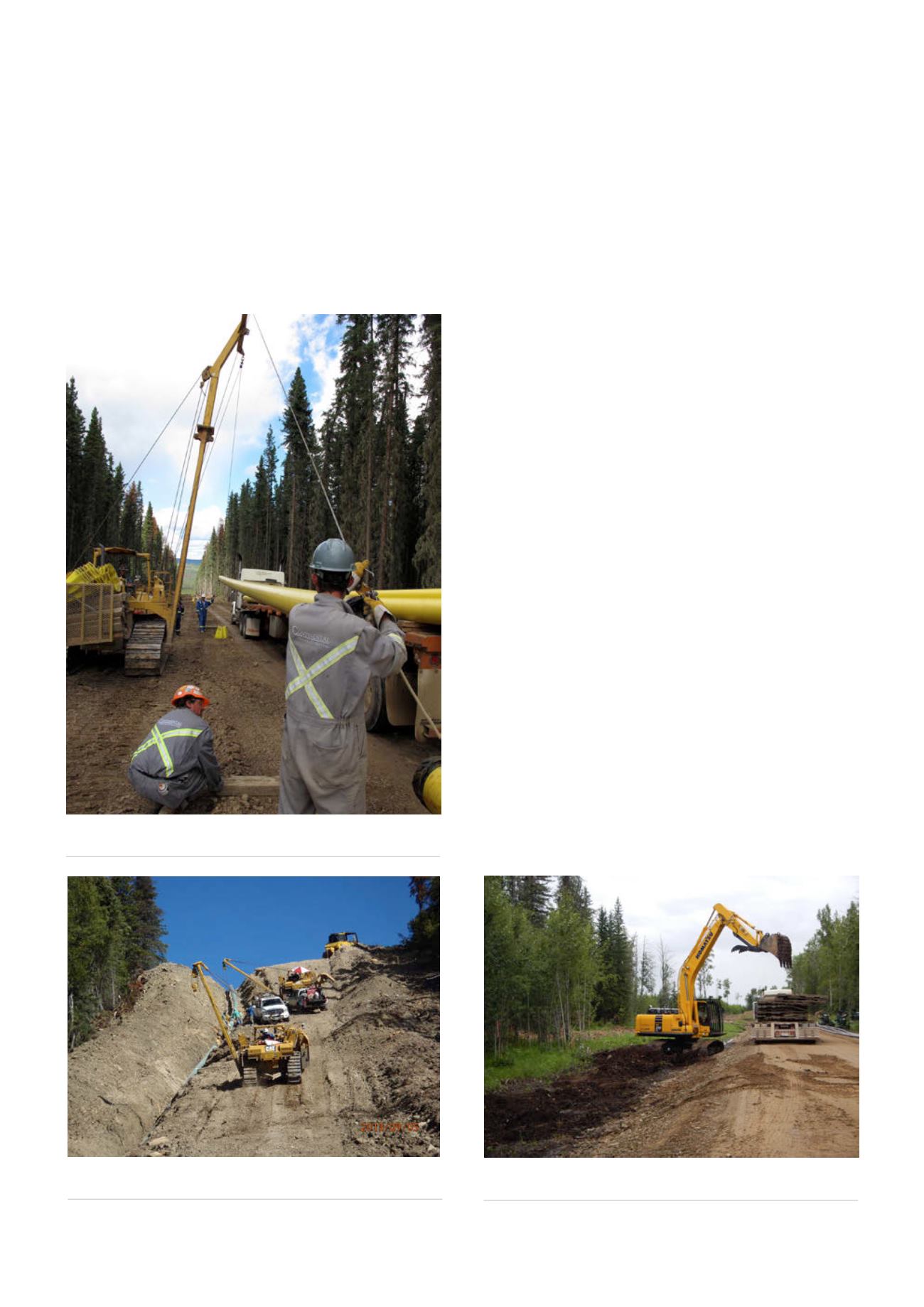
158
World Pipelines
/
AUGUST 2015
Third party training providers
There are several companies that specialise in pipeline
equipment training and competency evaluations. The courses
they provide can be tailored to your specific equipment
and operations. Some even offer computer based training
modules that increases training flexibility. Most third party
training providers will come to your project and work with
your equipment and operators onsite, which for many pipeline
contractors is a very attractive option.
Machine safety zones
A way to protect workers from injury while working with pipeline
equipment is the use of machine safety zones. A machine safety
zone includes the maximum reach of the machines boom, stick,
counter weight or other attachment plus a buffer distance for
360˚ around a machine. Workers are instructed to stay out of
the safety zone unless a specific task requires them to be within
the zone. Any worker that is required to enter the safety zone
must first make eye contact with the operator. Once the worker
has made eye contact with the operator, they would then signal
the operator that they wish to enter the safety zone. If it is safe
for the worker to enter, the operator would then idle down
the machine, place any applicable attachments on the ground
and then signal the worker that it is ok to enter. If an operator
notices a worker who enters his machine’s safety zone without
first notifying him and receiving permission to enter, the operator
would stop operations and sound the machines horn if equipped,
to provide a friendly reminder to the worker that they have
entered a potential danger area.
Working inside the safety zone
A majority of the pipeline work such as stringing of pipe,
excavating of existing pipelines, stabbing and spacing of pipe
for welding, requires workers to be within close proximity of
working machinery and often well inside the machine’s safety
zone. In these scenarios, a specific job safety analysis (JSA) or
safe work practice (SWP) relating to the work needs to be in
place and reviewed with all workers involved with the specific
task. The JSA or SWP should detail at a minimum the number
of workers involved, the communication methods to be used
and personal protective equipment required. The review of
the JSA or SWP should be completed during the first tailgate/
safety meeting before starting the particular task or job. To
avoid confusion about who is giving signal to the operator,
one person should always be designated as the spotter or
signal person for the equipment operator. Working near
above-ground piping, power lines and other equipment also
requires a person to be assigned to work with the machine
operator as a spotter. The purpose of the spotter is to alert
Figure 4.
Clear communication between operator and spotter is
paramount.
Figure 5.
Steep terrain requires ROPS equipment and good
training.
Figure 6.
FOPS protects operators when moving materials.
Handrails provide fall protection during servicing.


